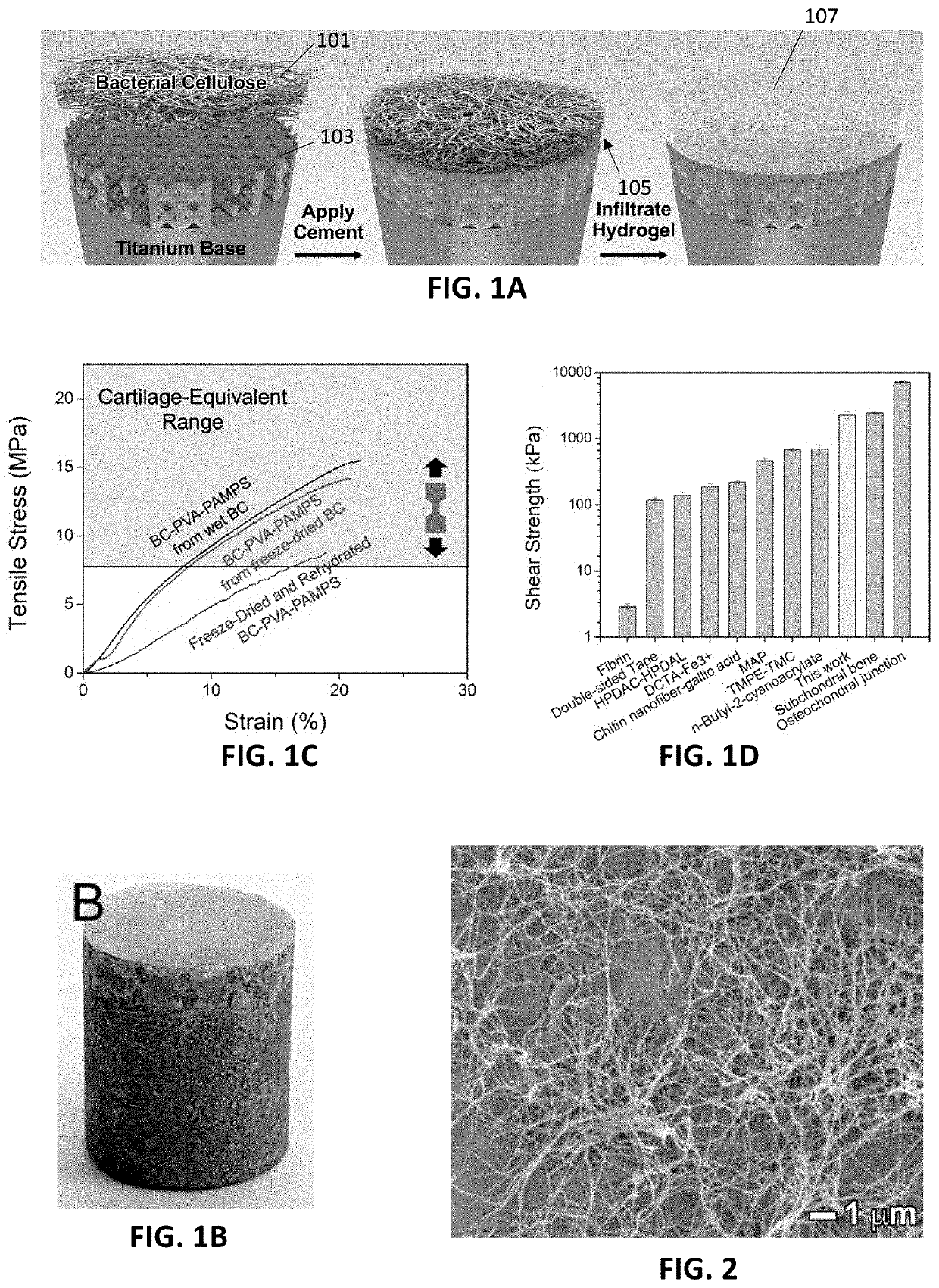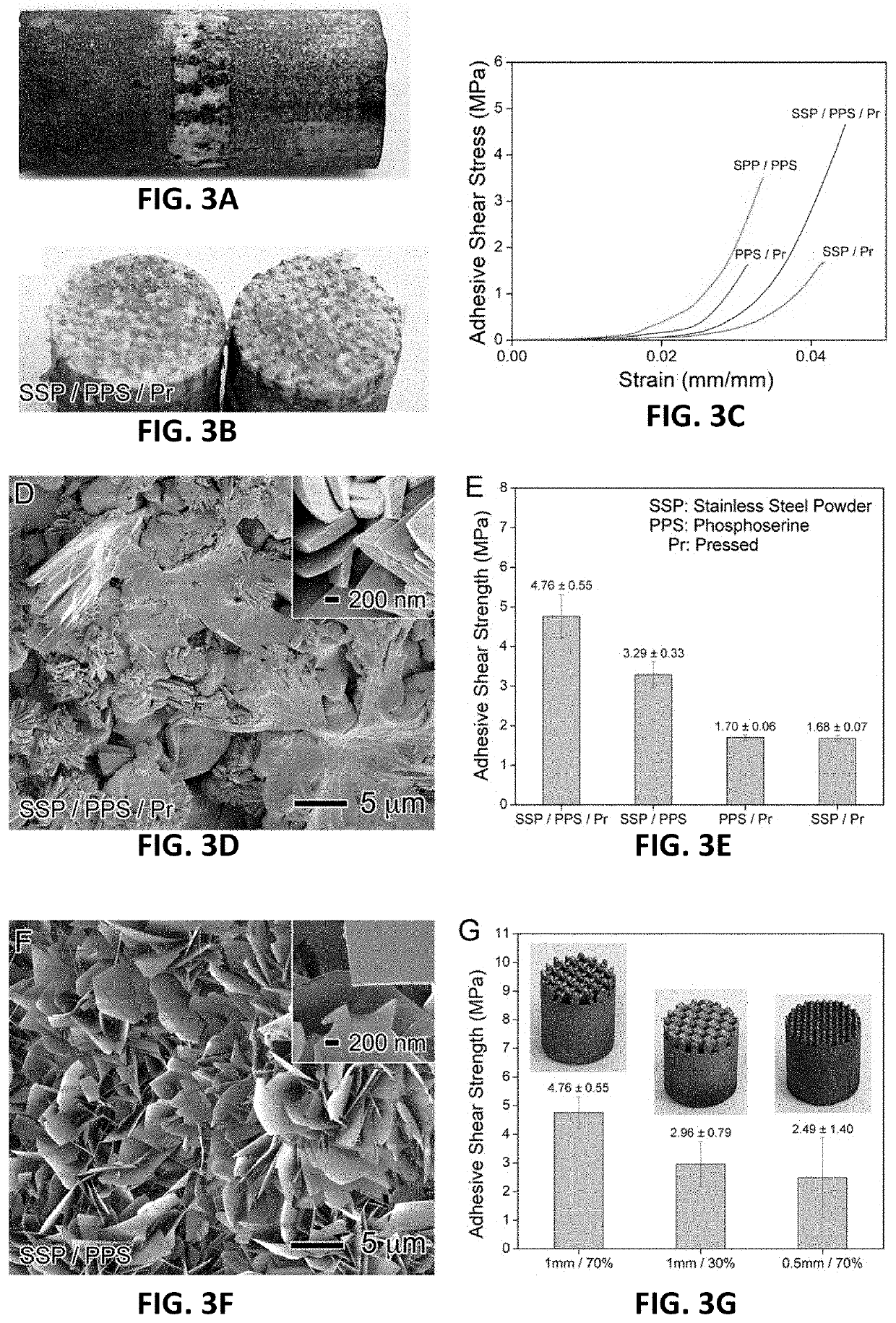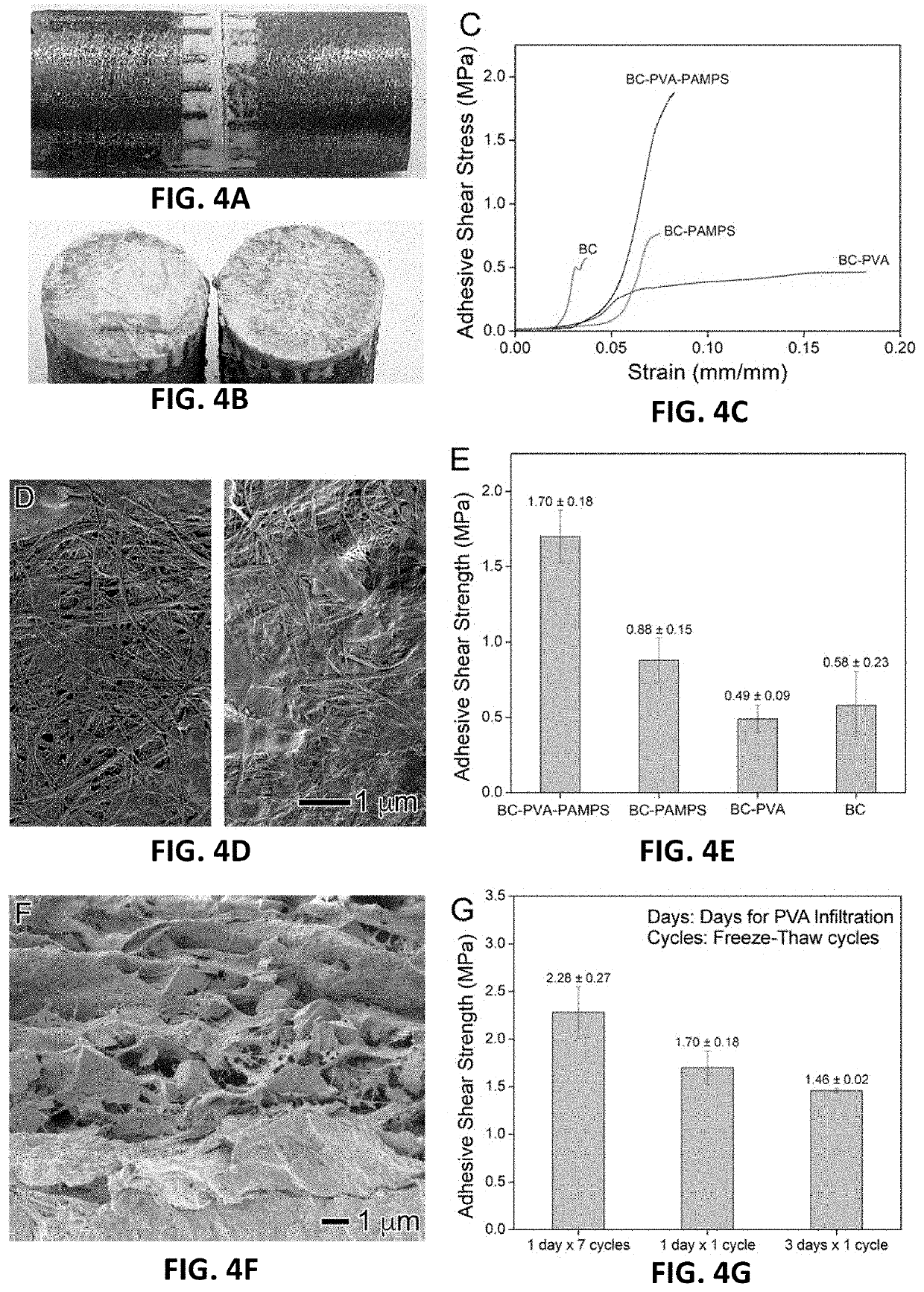Nanofiber reinforcement of attached hydrogels
a hydrogel and nanofiber technology, applied in the direction of prosthesis, coating, surgery, etc., can solve the problems of poor adhesion and concentration of stress at the hydrogel-substrat interface, weak shear strength than the bone-cartilage interface, and cyanoacrylate can have cytotoxic effects,
- Summary
- Abstract
- Description
- Claims
- Application Information
AI Technical Summary
Benefits of technology
Problems solved by technology
Method used
Image
Examples
examples
[0133]A hydrogel may be attached to a titanium base with the strength and fatigue of cartilage on bone. Current strategies for attachment of a hydrogel to a substrate are weaker than the osteochondral junction by a factor of ten. The methods and apparatuses described herein may achieve an attachment strength between a hydrogel and a porous substrate equivalent to the osteochondral junction. Thus a hydrogel may be attached to a titanium base with the shear strength and fatigue strength of the osteochondral junction.
[0134]A hydrogel-capped implant may be configured so as to promote osseointegration while minimizing abnormal stresses that might arise due to slight imperfections in the placement of the implant during surgery. The hydrogel may be attached to a porous titanium base with the strength of the osteochondral junction. These methods and apparatuses may allow fabrication of a hydrogel-capped implant for implantation, enabling hydrogel-capped implants for rapid repair of cartilag...
PUM
| Property | Measurement | Unit |
|---|---|---|
| Fraction | aaaaa | aaaaa |
| Pressure | aaaaa | aaaaa |
| Length | aaaaa | aaaaa |
Abstract
Description
Claims
Application Information
 Login to View More
Login to View More - R&D
- Intellectual Property
- Life Sciences
- Materials
- Tech Scout
- Unparalleled Data Quality
- Higher Quality Content
- 60% Fewer Hallucinations
Browse by: Latest US Patents, China's latest patents, Technical Efficacy Thesaurus, Application Domain, Technology Topic, Popular Technical Reports.
© 2025 PatSnap. All rights reserved.Legal|Privacy policy|Modern Slavery Act Transparency Statement|Sitemap|About US| Contact US: help@patsnap.com



